Stage review: Even for its crass humor, ‘The Book of Mormon’ has a lot of heart

In all my time writing about theater, I don’t know if there’s been a show that made me laugh as much, or say “Oh my God” as much, as “The Book of Mormon.”
In what other musical can you hear comparisons of Mormon missionaries to Frodo and Samwise from “Lord of the Rings” but also lyrics like “I believe that in 1978 God changed his mind about Black people”?
“The Book of Mormon” features music, lyrics and a book by Robert Lopez (“Avenue Q,” “Frozen”), Trey Parker and Matt Stone, the latter two being the co-creators of “South Park,” so I really shouldn’t have been surprised by some of the content in the show.
The musical follows Elder Kevin Price (Sam McLellan) and Elder Arnold Cunningham (Diego Enrico), two missionaries with the Church of Jesus Christ of Latter-day Saints, who have been paired up and sent to Uganda for their two-year mission.
As the pair attempts to preach to those in the Ugandan village, Elder Price and Elder Cunningham become, respectively, less and more dedicated to their faith as they are faced with disinterest from the villagers, who are more concerned with HIV/AIDS, famine, threats of genital mutilation and the warlord (a both scary and funny Dewight Braxton Jr.) who rules the village.
Where Elder Price is confident that he’s about to change the world, the pop-culture obsessed Elder Cunningham is just happy to be included. McLellan and Enrico made really fun physical choices that helped express their personality differences. McLellan stood tall at the beginning of the show, with a pristine white shirt and a pin-straight tie, while Enrico was always a little hunched over and a step or two behind, with a wrinkly shirt and a tie that always seemed to be at least a little askew.
The Bert-and-Ernie-type friendship between the two was so fun to watch, especially during “You and Me (But Mostly Me),” and made their individual transformations that much more impressive. Enrico’s “Man Up” and McLellan’s “I Believe” were two of my favorite musical moments of the evening.
Keke Nesbitt was so sweet as Nabulungi, unabashedly enthusiastic for what Elder Price and Elder Cunningham had to say. Her “Sal Tlay Ke Siti” was another fun musical moment, and she and Enrico made for a cute non-couple during “Baptize Me.”
Solo performances aside, I really enjoyed when each group, if you will, took the stage. The missionaries singing “Turn It Off” and “I Am Africa” were two of those “Oh my God” moments, and the Ugandans telling the story of Joseph Smith as they learned it from Elder Cunningham (“Joseph Smith American Moses”) got more and more ridiculous as the song went on.
The skilled cast also includes Craig Franke, Trevor Dorner, Charity Arianna, Dylan Bivings, DeVon Buchanan, Andrew Burke, Jarius Miquel Cliett, Justin Forward, Craig Franke, Lars Hafell, Alesha Jeter, Kisakye, Evan Lennon, Clayton Lukens, Jay Martin, Joey Myers, Jewell Noel, Connor Olney, Thomas Ed Purvis, Noah Silverman, Loren Stone, Bhrianna Veillard, Dylan Knight Weaver and Brigham Williams.
Before moving on from the music, a shoutout to the orchestra for their versatility during the show. The orchestra features Braden Chudzik (conductor/keyboard 1), David Williams (associate conductor/keyboard 2), Ari Friedman (guitar), Isaac Surprenant (bass), Jared Shaw (drums), Alex Jashinski (reeds), Sean McKay (trumpet), Patrick McGihon (trombone), Jessica Gehring (violin/viola) and Randy Cohen (keyboard programmer).
Performances aside, the first thing that really stood out to me at Tuesday’s opening night was that “The Book of Mormon” is a visually beautiful show. Scenic designer Scott Pask’s work includes gorgeous backdrops that take viewers from bright and shiny Salt Lake City to red clay-tinged northern Uganda to fiery hell and back. (“Spooky Mormon Hell Dream” is just as fever dream-y as it sounds and comes complete with appearances from Lucifer, Adolf Hitler, Genghis Khan, Jeffrey Dahmer and Johnnie Cochran.)
Characters also spend most of the show with beautifully constructed set pieces like tin-walled shacks with straw roofs and bunk houses that are less than ideal for the missionaries, especially Elder Price, who had hoped to be sent to Orlando.
As I mentioned in my preview, when “The Book of Mormon” opened in 2011, some were upset that the show didn’t work on bringing authentic Ugandan culture to the stage. Just under a decade later, shortly after the murder of George Floyd, Black actors from the show told the creative team the show would be viewed differently once it reopened post-pandemic.
The creative team then worked with the cast to rework problematic scenes and give the Ugandan characters more agency in the story.
Having not seen the show in its original form, I don’t know exactly how much has changed, but the current version has seemingly put the Ugandans in on the joke from the beginning. Toward the end of the show, they tease Nabulungi for believing some of the crazy things Elder Cunningham said.
There are still microaggressions toward the Ugandans, like Elder Cunningham constantly mispronouncing Nabulungi’s name, calling her things like “Neutrogena” and “Nesquik,” though Nabulungi didn’t seem to mind, and the musical thrives on the “white savior” complex.
Still, for all its crass humor, “The Book of Mormon” has a lot of heart and stresses the importance of community. It will probably make you cringe, but the show will also make you double over with laughter and might even make you hum “Hello!” anytime you hear a doorbell.